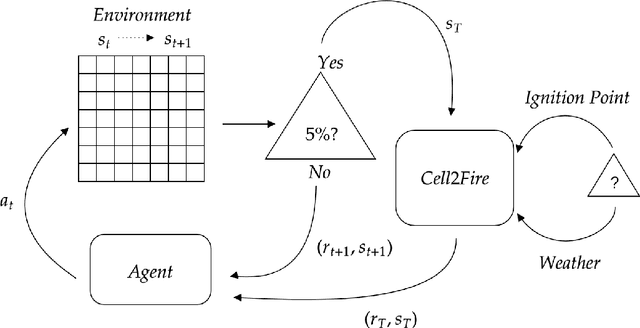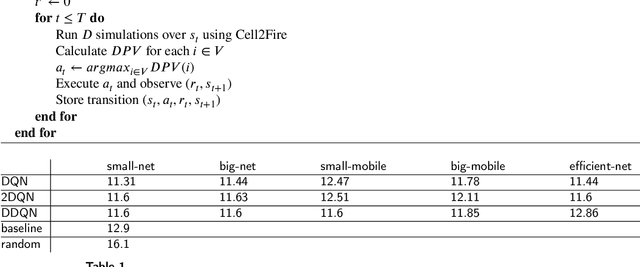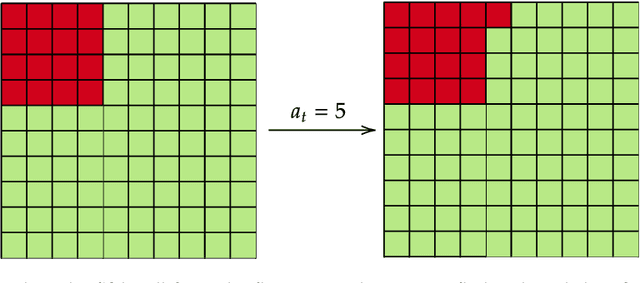Andrés Weintraub
Advancing Forest Fire Prevention: Deep Reinforcement Learning for Effective Firebreak Placement
Apr 12, 2024



Abstract:Over the past decades, the increase in both frequency and intensity of large-scale wildfires due to climate change has emerged as a significant natural threat. The pressing need to design resilient landscapes capable of withstanding such disasters has become paramount, requiring the development of advanced decision-support tools. Existing methodologies, including Mixed Integer Programming, Stochastic Optimization, and Network Theory, have proven effective but are hindered by computational demands, limiting their applicability. In response to this challenge, we propose using artificial intelligence techniques, specifically Deep Reinforcement Learning, to address the complex problem of firebreak placement in the landscape. We employ value-function based approaches like Deep Q-Learning, Double Deep Q-Learning, and Dueling Double Deep Q-Learning. Utilizing the Cell2Fire fire spread simulator combined with Convolutional Neural Networks, we have successfully implemented a computational agent capable of learning firebreak locations within a forest environment, achieving good results. Furthermore, we incorporate a pre-training loop, initially teaching our agent to mimic a heuristic-based algorithm and observe that it consistently exceeds the performance of these solutions. Our findings underscore the immense potential of Deep Reinforcement Learning for operational research challenges, especially in fire prevention. Our approach demonstrates convergence with highly favorable results in problem instances as large as 40 x 40 cells, marking a significant milestone in applying Reinforcement Learning to this critical issue. To the best of our knowledge, this study represents a pioneering effort in using Reinforcement Learning to address the aforementioned problem, offering promising perspectives in fire prevention and landscape management
Comparison of metaheuristics for the firebreak placement problem: a simulation-based optimization approach
Nov 29, 2023Abstract:The problem of firebreak placement is crucial for fire prevention, and its effectiveness at landscape scale will depend on their ability to impede the progress of future wildfires. To provide an adequate response, it is therefore necessary to consider the stochastic nature of fires, which are highly unpredictable from ignition to extinction. Thus, the placement of firebreaks can be considered a stochastic optimization problem where: (1) the objective function is to minimize the expected cells burnt of the landscape; (2) the decision variables being the location of firebreaks; and (3) the random variable being the spatial propagation/behavior of fires. In this paper, we propose a solution approach for the problem from the perspective of simulation-based optimization (SbO), where the objective function is not available (a black-box function), but can be computed (and/or approximated) by wildfire simulations. For this purpose, Genetic Algorithm and GRASP are implemented. The final implementation yielded favorable results for the Genetic Algorithm, demonstrating strong performance in scenarios with medium to high operational capacity, as well as medium levels of stochasticity
 Add to Chrome
Add to Chrome Add to Firefox
Add to Firefox Add to Edge
Add to Edge